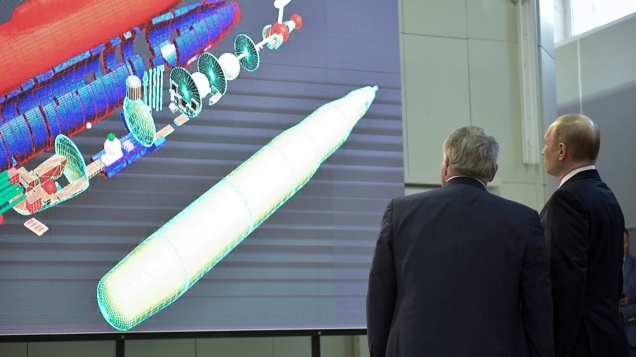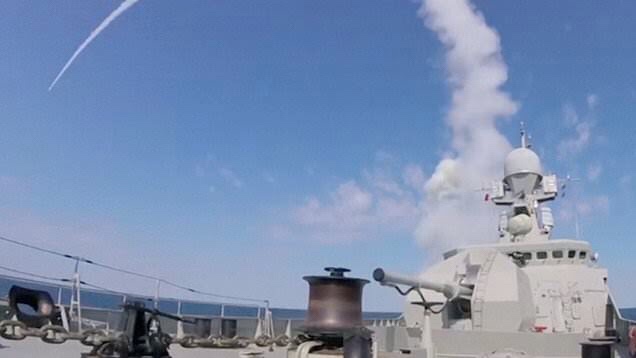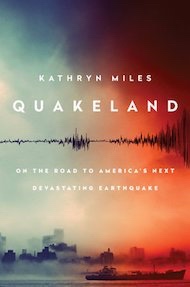 The New Nuclear Arms Race Is Here. And Russia’s Already Paying the Price.
The New Nuclear Arms Race Is Here. And Russia’s Already Paying the Price.
Meet 4 new nuclear weapons systems the Kremlin is testing — right now.
By Greg Walters
Aug 29 2019, 2:09pm
At the funeral for 14 Russian sailors, Captain Sergei Pavlov hailed
the “blameless heroes” for dousing the fire that broke out on their
nuclear spy submarine, called the Losharik, during a secret mission last
month.
“At the cost of their lives,” Pavlov said, “they prevented a catastrophe on a planetary scale.”
But as Russia tests and deploys an array of exotic new nuclear
weapons, fears are mounting that the next nuclear mishap may not be so
easily contained.
This summer alone, Russia has suffered some two-dozen casualties in accidents related to exotic nuclear hardware,
including the mysterious explosion linked to the Skyfall missile
program that killed seven and sent local radiation levels spiking in a
nearby city.
The deadly incidents are stoking fears of a return to
Cold War-style runaway nuclear arms development, accompanied by dangerous accidents and Soviet-style cover-ups.
You can blame the renewed U.S.-Russian arms race, which nuclear
experts warn is driving Russia to recklessly experiment with “absurd”
new ideas.
“We need to acknowledge that the Russians are engaged in wacky
programs,” said Aaron Stein, a nuclear nonproliferation expert at the
Foreign Policy Research Institute. “It’s indicative of an arms complex
that has been cut loose to pursue exotic, silly projects. And it’s
dangerous.”
Things that go boom
The U.S. and Russia have bitterly accused each other of violating
arms control obligations for decades (Putin still likes to complain
about George W. Bush’s decision to ditch an anti-missile defense treaty
in 2002). But even in this context, the recriminations and
missile-waving have ratcheted up in recent years.
President Trump shares some of the blame. Since taking office, he’s
proposed billions more in spending on nuclear programs, and began
manufacturing low-yield, tactical warheads that could be deployed in a
more limited way on a battlefield, a factor making them more likely to
be used.
He stoked further outrage in Russia and much of the international
community by officially withdrawing the U.S. from the INF Treaty, which
US officials and independent experts say Russia had been violating for
years.
The Cold War-era INF Treaty banned land-based short and medium-range
missiles, and its demise means that both sides will likely begin
developing new nuclear missiles designed to be launched much closer to
their targets that was previously allowed.
Putin, for his part, has kicked things up a notch by personally
unveiling several new nuclear weapons. In a massively-hyped rollout last
spring, Putin boasted they’d be “invincible” to U.S. missile defense
systems, and showcased a video of warheads raining down on Florida to
thunderous applause from a roomful of Moscow’s ruling elite.
But while shiny new nukes may earn him love at home, ultimately
Putin’s solving a problem Russia doesn’t actually have: Russia has so
many missiles it could easily swamp American defenses.
“The current Russian strategic arsenal faces no strategic challenge,
and won’t in the foreseeable future,” said Joshua Pollack, editor of The
Nonproliferation Review.
His race for nuclear supremacy, however, appears to be driving Russian weapons developers into weirder and riskier technologies
“It’s as if the nuclear and arms complexes have been unleashed to
pursue their fantasies and daydreams, as if it’s the late ‘70s or early
‘80s again,” said Pollack
Some are downright “absurd,” given Russia’s overwhelming missile power, said Stein.
Putin’s new weapons programs include:
Skyfall: A cruise missile intended to achieve infinite range via an onboard nuclear-powered engine.
A similar idea was abandoned by U.S. war planners in the 1960s as too
dangerous, in part because the engine spewed radioactive exhaust in its
wake.
Poseidon: A long-range nuclear torpedo designed to unleash a radioactive 500-meter tall tsunami against a coastal city. Western experts say the weapon appears best suited for targeting a seaside civilian population, rather than military targets.
Dagger: A plane-launched hypersonic glide missile designed to evade missile defense with advanced speed and maneuverability.
Avangard: A hypersonic
winged glider weapon that’s fired high into the atmosphere before
reemerging and traveling in unpredictable patterns to get around defense
systems.
Disasters and cover-ups
The hush-hush atmosphere surrounding these military programs is
raising anxiety that any mistakes won’t be properly accounted for — and
that locals won’t get vital information they need to stay safe after a
nuclear accident.
Such fears appeared to be borne out after the mysterious Aug. 8
explosion that killed seven people and sent local radiation readings
spiking 16 times above average in a nearby city of almost 200,000
people.
Independent researchers, and President Trump in a tweet, linked the
blast to a failed test of the Skyfall missile program. Afterwards,
Russia stopped sharing data with international observers tracking nearby
radionuclide monitoring stations — either for fear of causing panic, or
of giving hints about the nature of their work.
Russia’s fearsome FSB spy agency reportedly forced doctors treating
the wounded to sign non-disclosure agreements, and didn’t warn them
patients might be radioactive. On Monday, Russia said air tests had
found four kinds of radioactive particles that had been released after
the explosion.
And that wasn’t an isolated incident. In July, an international team
of researchers traced the origins of a huge, mysterious radioactive
cloud that blanketed Europe in 2017 back to — you guessed it — Russia.
The team said the cloud posed no threat to Europe, but warned the
area around the release might have faced much more serious fallout. If
it did, nobody from Russia admitted it.
Naturally, after all that, Russian officials chose last week to
launch a controversial floating nuclear power plant, dubbed the Akademik
Lomonosov, into some of the most forbidding waters on the planet, near
the Northeastern Russian coast near Alaska.
Environmentalists warn the ship is a “nuclear Titanic,” and a disaster waiting to happen.
No treaties
Of course, it takes two to make a nuclear arms race, and western
experts say the U.S. shares the blame for spurring on Russia’s recent
recklessness, after backing away from arms control treaties and engaging
in provocative testing of its own.
“I think both sides are to blame,” said Sarah Bidgood, director of
the Eurasia Nonproliferation Program at the James Martin Center for
Nonproliferation Studies in Monterey, California. “But each side wants
to point the finger at the other guy.”
Just last week, the U.S. test-launched a medium-range cruise missile
in California for the first time since backing out of a Cold War-era
treaty banning those weapons.
In response, Putin accused the U.S. of “escalating military
tensions,” and ordered his defense ministry to “prepare a reciprocal
response.”
Somehow, things could still get worse. Moscow has accused Trump of
failing to answer calls to open up negotiations on extending the New
START treaty, which reduced the number of strategic nuclear missile
launchers and is set to expire in 2021.
Failure to extend New START will be “quite fatal,” warned Putin’s spokesman, Dmitry Peskov, on Monday.
And without further precautions in Russia, or a new push toward
transparency, these new programs are likely to carry on in the dark,
where they’ll likely cause more fatal mishaps, experts said.
“We’ll undoubtedly see more accidents,” said David Szakonyi, who
studies Russian affairs at George Washington University in Washington
D.C. “If you don’t put new safety mechanisms in place, this is just
going to keep happening and happening. I don’t see this getting better
before it gets worse.”
Cover: Russian President Vladimir Putin, right, listens to President
of National Research Center “Kurchatov Institute” Mikhail Kovalchuk, as
he visits Kurchatov Institute of Atomic Energy, the home of the Soviet
nuclear weapons program and later Soviet and Russian non-military
nuclear technologies in Moscow, Russia, Tuesday, April 10, 2018. (Alexei
Nikolsky, Sputnik, Kremlin Pool Photo via AP)

















